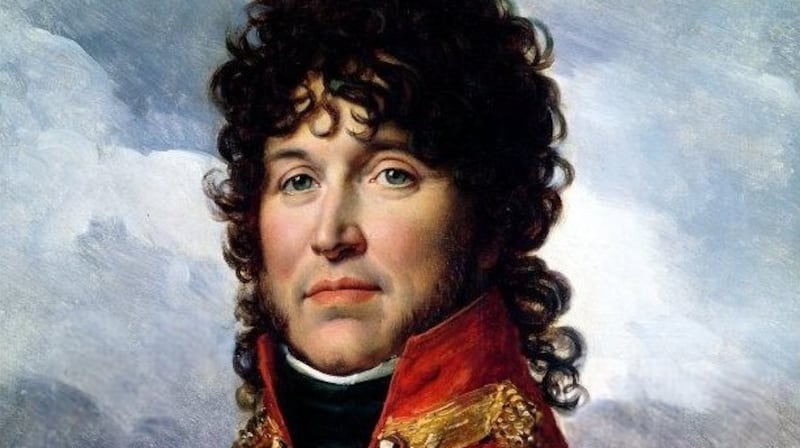It’s not every day that you hear a man from Westmeath led an army of 8,000 Austrian soldiers deep into southern Italy to depose a Frenchman. Yet it’s entirely true. That man was general Laval Nugent.
May 1815 saw the armies of the Austrian Empire march down the Italian peninsula during the last days of the Napoleonic era to overthrow Joachim Murat "the Dandy King" of Naples, brother-in-law of Napoleon Bonaparte and the "First Horseman of Europe".
Murat, reeling from a defeat ten days earlier at the battle of Tolentino, decided to go on the offensive. He launched an assault on Nugent’s entire line, just outside of the town of San Germano (now better known as the site of the famous battle of Monte Cassino during the second World War), and initially gained the upper hand, before Austrian reinforcements arrived and threatened the Italians with encirclement.

Faced with this new danger, the Neapolitan king decided to retreat to a more favourable position a few miles to the south at the village of Mignano, but his army was soundly defeated. Murat fled into exile on the 19th, and his kingdom sued for peace the following day.
Within a month, Napoleon too would suffer defeat at Waterloo (opposed by another Irishman, the Dublin-born Arthur Wellesley, Duke of Wellington). But who was this man from the midlands who found himself at the heart of the Napoleonic wars?
Soldier
Nugent was effectively a career soldier. Born at Ballynacor House in Westmeath, both his parents came from noble lines. The family association with the Habsburgs' domain was already long established. His grandfather Michael Nugent had been a senior member of the Empire's administration, having served as governor of Prague and been appointed a German graf (count), while his uncle Oliver was a colonel in the emperor's army.
Following the premature death of his father, Laval was sent to Vienna at the age of 12, where his uncle secured him a cadetship within the Military Engineering Academy. He graduated in 1794 and was made a lieutenant in the engineering corps at the age of 16. Over the next decade he advanced quickly through the ranks, and became a colonel by 1807.
After some time as a member of staff at the army headquarters, Nugent spent a brief period as a diplomat in Great Britain before returning in 1813 to lead a small army of Croatian soldiers against the French occupation of the Illyrian provinces, which was then part of the Austrian Empire. His time in Illyria left a lasting impression, and he developed a fondness for the land and its people that was to stay with him through the remainder of his life. His small band managed to successfully free a number of cities across the region before later taking part in the Italian campaign.
His defeat of Murat earned him rich rewards. After being made a Roman prince by a grateful Pope Pius VII for his role in freeing the Eternal City from French occupation, he was also promoted to lieutenant field marshal by the Habsburg emperor. In November 1815 he married Giovanna Riario Sforza in Naples, and acquired lands in Italy.
Collector
With peace restored to Europe, he was appointed captain-general of the armies of the newly formed Kingdom of the Two Sicilies (formerly the separate kingdoms of Naples and Sicily) by the recently restored King Ferdinand I, and oversaw military reform in southern Italy. During this time he sponsored archaeological excavations in Lazio, and became and became an enthusiastic collector of antiquities.
Returning to Croatia following the Carbonari rebellion in 1820, and lacking an active military command, he dedicated most of his time to raising his family, acquiring and restoring ancient castles across the region and indulging his chief passion: enlarging his collections.
His holdings became so vast that he established his own private museum at Trsat Castle to house and display them. In addition to the Roman sculptures sourced from his excavations in Italy, he also exhibited a sizeable collection of Old Masters including works by Da Vinci, Raphael, Caravaggio and Titian, among others. His exhibition also boasted an impressive collection of Grecian and Etruscan pottery, bronze works, coins and an extensive library.
Viewed as a charismatic eccentric by his contemporaries, a large part of the collections he assembled still remain in Croatia and form a significant portion of several museums’ holdings today. Though he returned to the battlefield in 1848 during the First Italian War of Independence and the Hungarian Uprising (where he finally earned his marshal’s baton), his legacy lies not in the campaigns he won but in the priceless historical treasures he rescued and preserved. Not bad for an emigrant from Westmeath.
This Extraordinary Emigrants article was written by Nathan Mannion, senior curator at EPIC The Irish Emigration Museum (epicchq.com) in Dublin's Docklands. A small, temporary exhibition 'Laval Nugent - Warrior & Art Collector' on loan from the Archaeological Museum in Zagreb is on display at EPIC until February 22nd .










